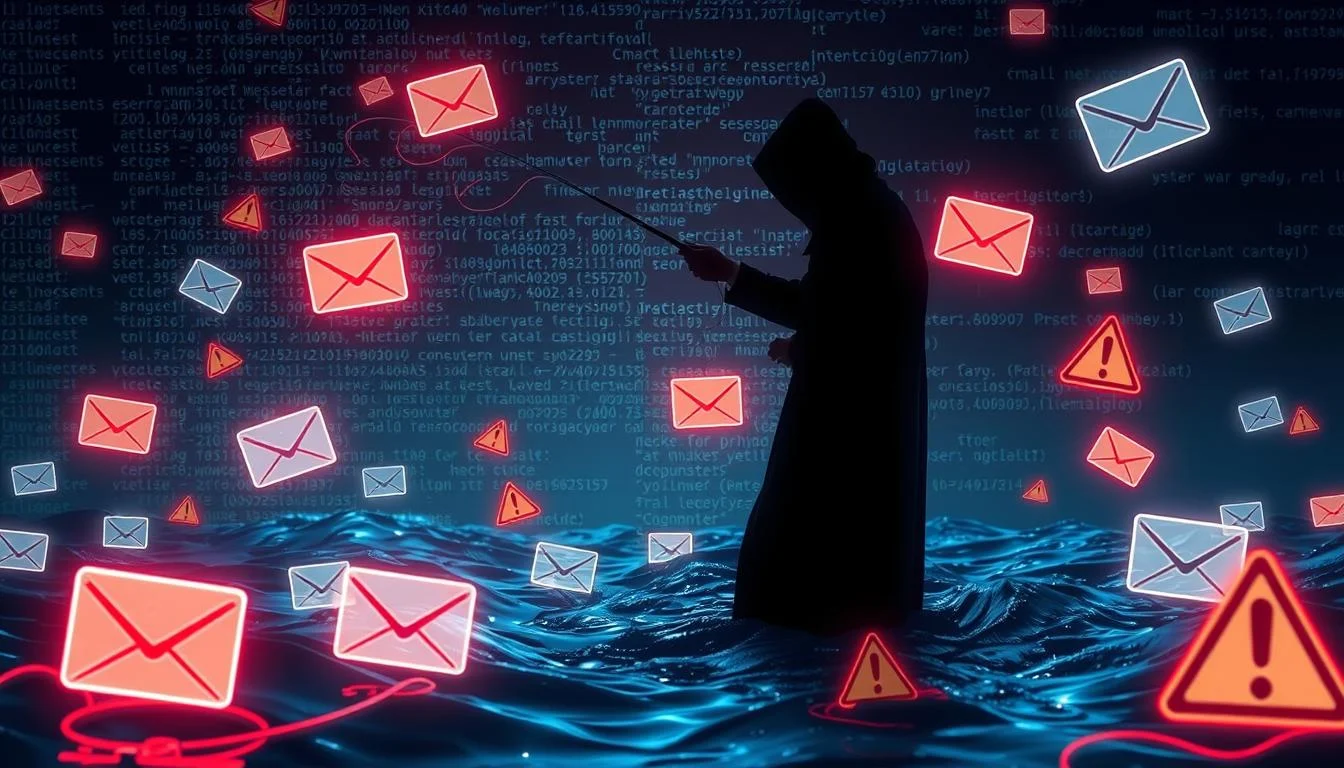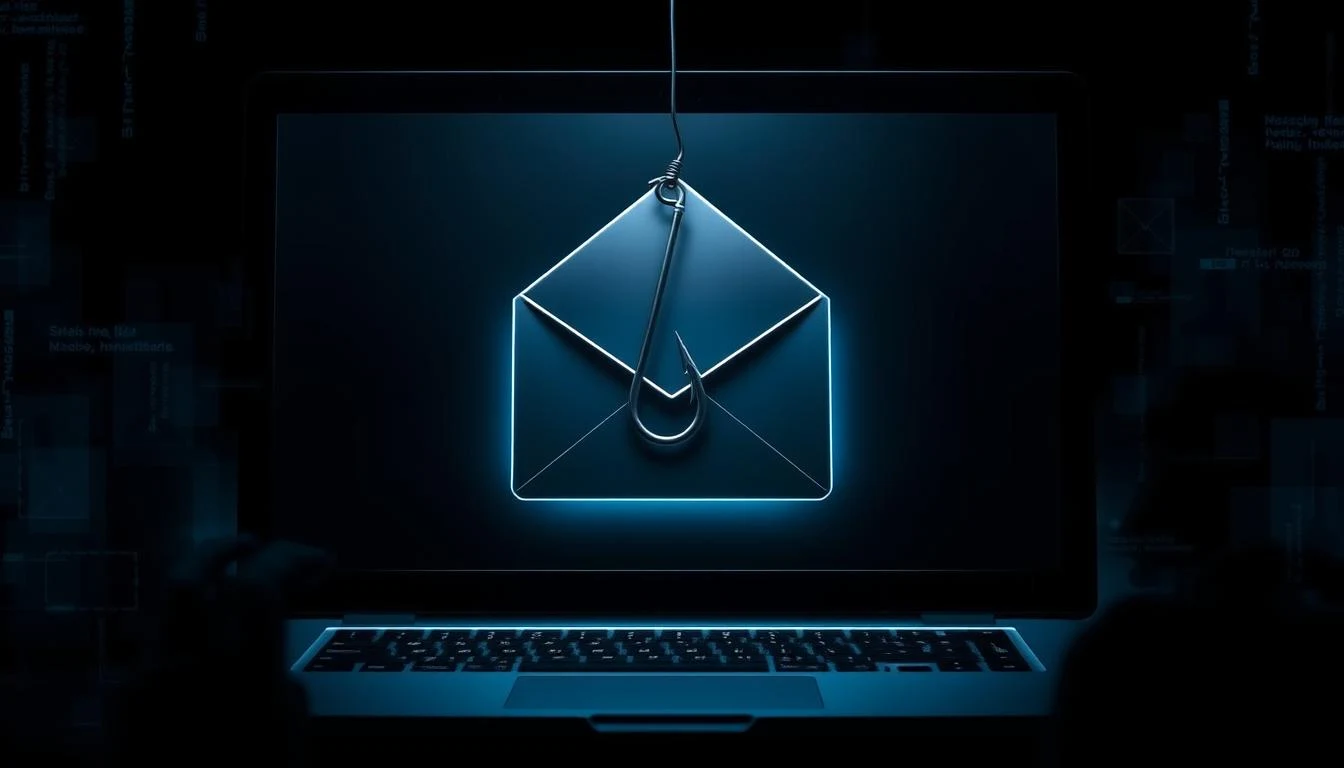Search This Blog
Welcome to Financially Free, your guide to taking control of your money. Learn to budget, pay off debt, and invest wisely. We provide practical advice and simple strategies to help you build wealth and achieve true financial independence. It's time to live life on your terms.
Axos ONE
Featured
- Get link
- X
- Other Apps
What Is Phishing? Protect Yourself Online
What Is Phishing? Protect Yourself Online
In today's world, keeping your digital life safe is more important than ever. Phishing is a big threat that tricks people into giving away their personal info. This can lead to serious problems like identity theft and data breaches.
This article will take you through the world of phishing. We'll cover what it is, how scammers work, and how to stay safe. By the end, you'll know how to protect yourself from these online threats.
Key Takeaways
- Phishing is a form of cybercrime that uses deceptive tactics to trick victims into revealing sensitive information.
- Phishing scams can lead to data breaches, identity theft, and financial losses.
- Recognizing common phishing tactics, such as fake emails and malicious links, is crucial for protection.
- Implementing cybersecurity best practices, like verifying email authenticity and using anti-phishing software, can help prevent phishing attacks.
- Staying informed and vigilant is the best defense against the evolving threat of phishing scams.
Understanding Phishing: A Cybersecurity Threat
Phishing is a common cyber threat. It's when hackers trick people into giving out personal info or doing things that put their online safety at risk. They use tricks to get around people's defenses.
Defining Phishing Attacks
Phishing emails look like they're from real places like banks or government offices. They try to scare you into clicking on bad links or sharing personal info. This can lead to big problems like stolen identities and lost money.
Common Phishing Tactics and Techniques
Hackers use many ways to trick people. Some common methods include:
- Making emails look real by using fake addresses and logos
- Writing messages that seem urgent or scary
- Putting in links that take you to fake websites
- Attaching files that harm your computer
- Using social media to spread phishing messages
These tricks are getting better, making it harder for people to stay safe online.
"Phishing attacks are a growing threat, with cybercriminals constantly devising new ways to exploit human vulnerabilities and compromise online security."
The Dangers of Email Phishing Scams
Email phishing scams are a big problem in today's world. They threaten both people and businesses. These scams use email to commit fraud, cause data breaches, and steal identities.
Cybercriminals make their emails look like they're from trusted places like banks or government offices. They include links or attachments that can steal your info or harm your device. If you fall for it, you could lose money, have your identity stolen, and face serious data breaches.
Phishing scams hurt more than just the person who gets tricked. When data gets stolen, it can be used for all sorts of crimes. This not only harms the victim but also the whole financial system and public trust.
"Phishing scams are a growing problem, with cybercriminals becoming increasingly sophisticated in their tactics. Staying vigilant and educating oneself on the warning signs is essential in protecting against these threats."
Knowing the dangers of email phishing scams is key to staying safe. By learning how scammers work and using strong security, you can lower your risk. This helps protect you and your business from these sneaky schemes.
Identifying Suspicious Emails and Malicious Links
In today's world, phishing scams are getting smarter. They often look like real messages from trusted places. It's key to know how to spot these fake emails and links to keep your data safe.
Red Flags to Watch Out For
Phishing emails have certain signs that show they're not real. Look out for emails that rush you to act fast without checking who they are. Also, be cautious of emails that seem to be from big companies but have spelling mistakes or wrong sender info.
Verifying Email Authenticity
It's important to check if an email is real before you click on anything. Look at the email address and domain to make sure they match the company it says it's from. Also, try contacting the sender through a trusted method to see if the email is legit.
By being careful and following these tips, you can avoid phishing scams, malicious links, and suspicious emails. This helps keep your personal and financial info safe from threats in your inbox.
Protecting Yourself from Phishing Attacks
In today's digital world, it's key to protect yourself from threats like phishing and online fraud. To keep your digital and personal info safe, follow good cybersecurity practices. Also, use anti-phishing software to your advantage.
Cybersecurity Best Practices
Using strong, unique passwords for all online accounts is a must. Adding two-factor authentication boosts your account security. This makes it harder for hackers to get into your accounts.
Be careful when clicking on links or downloading attachments online. Even if they seem safe, check the URL and sender's email first. This helps avoid scams.
Role of Anti-Phishing Software
Anti-phishing software is vital in fighting off data breaches and identity theft. It catches and blocks phishing attempts. This alerts you to dangers and stops online fraud.
Adding anti-phishing software to your digital security tools helps fight cybersecurity threats. It makes your online time safer.
"Cybersecurity is not just an IT issue, it's a business issue. Protect your digital assets with proactive measures."
Consequences of Falling Victim to Phishing
Phishing attacks can cause serious harm. They can lead to data breaches and identity theft. These issues can result in big financial losses and long-term damage.
Data Breaches and Identity Theft
Phishing scams target sensitive information like login details and credit card numbers. If they succeed, they can commit data breaches. This means a lot of personal info is stolen.
This stolen data can be sold online or used for identity theft. Thieves can open new accounts and make unauthorized purchases. This can ruin a person's financial life.
The effects of data breaches and identity theft are severe. They can lead to financial losses and damaged credit scores. Victims may also struggle to get loans or jobs.
They must spend a lot of time trying to fix their identity. Even then, they face ongoing threats from online fraud and other cybersecurity threats.
| Consequence | Impact |
|---|---|
| Data Breach | Theft of sensitive personal information, such as login credentials, credit card numbers, and Social Security numbers |
| Identity Theft | Fraudulent use of stolen personal information to open new accounts, make unauthorized purchases, and cause financial harm to victims |
| Financial Losses | Victims may suffer direct financial losses due to fraudulent transactions, as well as indirect costs associated with restoring their identity and credit |
| Damaged Credit | Identity theft can negatively impact a victim's credit score, making it difficult to secure loans, credit cards, or even employment |
| Ongoing Threats | Stolen personal information can be repeatedly used for online fraud and other cybersecurity threats, even after the initial phishing attack |
Falling victim to phishing can have lasting effects. Knowing the risks of data breaches and identity theft helps protect you. It can also reduce the harm caused by these attacks.
What Is Phishing?
Phishing is a way for cybercriminals to steal important info like passwords, bank details, or personal info. They do this by pretending to be someone they're not. This can be through fake emails, texts, or links on websites.
Phishing attacks usually follow the same steps:
- The scammer makes a fake message or website that looks real, like from a bank or government.
- They might make it seem urgent or offer something too good to be true to get you to act fast.
- If you fall for it, they can use your info to get into your accounts, steal your identity, or do other bad things.
It's key to know how to spot and avoid phishing to stay safe online. By being smart and careful, you can lower your chances of getting caught in these scams.
"Phishing attacks are a growing threat, and it's essential for everyone to be aware of the risks and take steps to protect themselves."
Conclusion
In today's digital world, phishing attacks are a big problem. They use tricks and advanced methods to harm people and companies. We've seen how phishing scams can lead to big issues like stolen data and money loss.
But, we can fight back against phishing. By knowing how to stay safe online, using strong security tools, and being careful with emails, we can lower the risk. It's important to be alert, check emails carefully, and make sure links and websites are real before using them.
As we go forward, we need to stay ahead of online threats. By using the tips and advice from this article, we can protect ourselves and our communities. Together, we can make the internet safer, keep our information safe, and keep our data secure.
FAQ
What is phishing?
Phishing is a cyber threat where scammers try to get sensitive info from people. They use fake emails, websites, or tricks to get things like passwords or financial details.
How do phishing scams work?
Scammers send emails that look real, like from banks or government. They might include a link or attachment. Clicking it can harm your device or steal your info.
What are common phishing tactics used by cybercriminals?
Scammers use fake emails and websites that look real. They also try to trick you with urgency or fear. These tactics aim to get you to act fast.
How can I identify a phishing email or suspicious link?
Look out for bad spelling, urgent requests, and links that don't seem right. Always check the URL by hovering over it. Contacting the real organization can also help.
What can I do to protect myself from phishing attacks?
Use strong passwords, enable two-factor authentication, and be careful with links and attachments. Install anti-phishing software. Stay updated on phishing tactics and report any suspicious activity.
What are the consequences of falling victim to a phishing attack?
Falling victim can lead to serious issues like data breaches and identity theft. It can also cause financial loss and harm your credit and reputation. Victims may also feel emotionally distressed.
- Get link
- X
- Other Apps
Popular Posts
Next.js Partial Prerendering: The End of the Static vs. Dynamic Trade-off
- Get link
- X
- Other Apps
Gemini 3 is Here: The AI That Finally "Reads the Room"
- Get link
- X
- Other Apps







Comments
Post a Comment